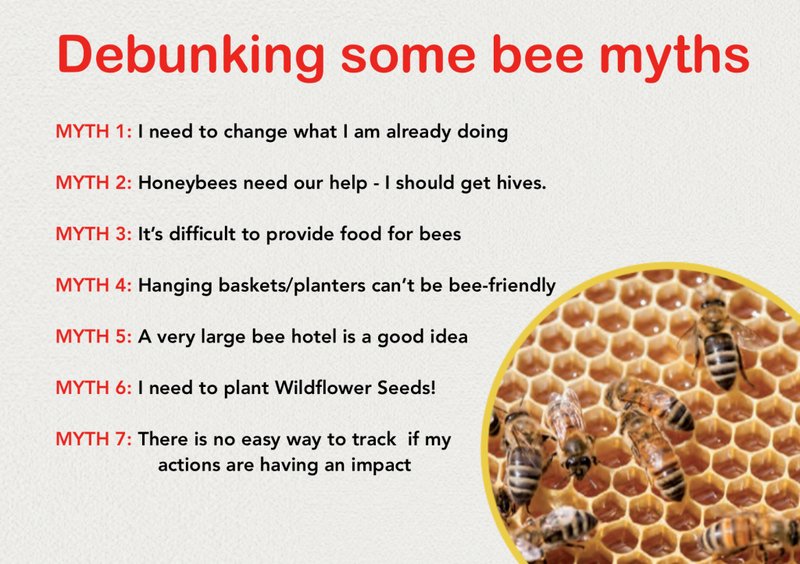
So, grab your favorite drink, and let’s dive into some of the most common myths surrounding these remarkable insects. You might be surprised by what you learn!
Myth 1: All Bees Can Sting
Let me explain this one: not all bees are created equal when it comes to stinging. While it’s true that many people fear bees because of their stingers, only a few species are aggressive enough to use them. The honeybee, for instance, will sting if it feels threatened, but it usually prefers to buzz away. On the flip side, many bees, like bumblebees, are generally docile and rarely sting unless provoked.
Plus, there are plenty of bee species that can’t sting at all! For example, male bees (drones) don’t have stingers. They play a unique role in the hive, mainly mating with queens, and they don’t have any interest in stinging humans. So, when you see a bee flying about, remember that most of the time, it’s just minding its own business, gathering nectar or pollen.
Myth 2: Bees Are Always Busy
Here’s the thing: while bees are indeed hardworking, they do take breaks. Ever seen a bee just hanging out on a flower? They’re not doing chores 24/7! Bees have a rhythm to their day, with periods dedicated to foraging and other times for resting and socializing with fellow hive members.
Think about it like this: imagine working a full day with no breaks—pretty exhausting, right? Bees need downtime, too! During the colder months, many species even go dormant, conserving energy until the weather warms. It’s a natural cycle, and that downtime is crucial for their survival and the health of the hive.
Myth 3: Bees Only Produce Honey
You might be wondering, “Isn’t honey the only sweet product of bees?” Not quite! While honey is certainly the most famous, bees create a variety of products that are just as vital. For instance, they produce beeswax, used in everything from cosmetics to candles. They also create royal jelly, a nutrient-rich substance that helps raise queen bees.
Additionally, the role of bees in pollination can’t be understated. They help in the growth of fruits, vegetables, and nuts, contributing significantly to our food supply. So, when you think of bees, remember their reach goes beyond honey; they’re essential in maintaining a healthy ecosystem.
Myth 4: Bee Populations Are Just Fine
Honestly, this myth needs addressing. Unfortunately, bee populations are declining globally at an alarming rate. Factors like habitat loss, pesticides, and climate change are taking a toll on these essential pollinators. You might not see the impact right away, but fewer bees mean potential repercussions for our food sources and natural landscapes.
Conservation efforts are underway, and every bit helps. Planting bee-friendly flowers, creating habitats, and reducing pesticide use can all make a difference. Think of it like supporting a friend in need; every little action counts, and together, we can help bees thrive again.
Myth 5: All Bees Are Yellow and Black
You might picture bees as fuzzy yellow-and-black striped insects, but they come in a variety of shapes, sizes, and colors. Some bees, like the leafcutter bee, are more brown than yellow. Then there’s the blue mason bee, which sports a striking blue hue. Rarely do we stop to think about the diversity among these creatures, but their coloration can be quite eye-catching!
This variety isn’t just about looks; it’s about function too. Different bees have evolved to thrive in various environments and fulfill different roles in their ecosystems. So, the next time you see a bee, take a moment to appreciate its unique appearance and contribution!
Myth 6: Bees Are Inherently Aggressive
Let’s clear this up: bees are not inherently aggressive. Most species prefer to avoid confrontation and will only sting in self-defense or to protect their hive. When you see a bee buzzing around, it’s usually just looking for flowers. In fact, some species are quite gentle and are great for gardeners, helping pollinate plants without causing any trouble.
You might have heard stories about people getting stung while gardening. While stings can happen, it’s typically a case of accidentally disturbing the bee. By approaching hives or flowers with respect and caution, you can enjoy the benefits of having these little workers around without the fear of being stung.
Myth 7: Honey Is the Only Thing Bees Make
While honey is delicious and widely loved, it’s not the only treasure produced by bees. They create a fascinating array of products that are significant for their survival and the health of their colonies. Pollen, for example, is collected by bees and serves as a key source of protein for their young.
Then there’s propolis, a resinous substance that bees gather from tree buds. They use it to seal and protect their hives from pathogens. This sticky material is packed with nutrients and is even used in natural remedies by humans. So, next time you enjoy honey, think of all the hard work and teamwork that goes into producing not just the honey but also a whole suite of materials that benefit both bees and humans.
When it comes to bees, there’s a lot more than meets the eye! From their non-aggressive nature to their varied roles within the ecosystem, understanding these creatures helps shift our perspective. They’re not just buzzing nuisances; they’re essential partners in our environment.
So, let’s celebrate bees for all they do. Whether you’re planting a bee-friendly garden or simply appreciating their role in nature, every small action helps. The next time you see a bee, take a moment to admire its hard work and remember the truths behind these magnificent creatures. With a little understanding, we can all contribute to a healthier world for bees and, in turn, for ourselves.

